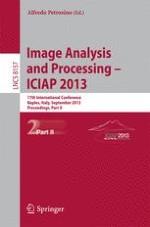This two volume set (LNCS 8156 and 8157) constitutes the refereed proceedings of the 17th International Conference on Image Analysis and Processing, ICIAP 2013, held in Naples, Italy, in September 2013. The 162 papers presented were carefully reviewed and selected from 354 submissions. The papers aim at highlighting the connection and synergies of image processing and analysis with pattern recognition and machine learning, human computer systems, biomedical imaging and applications, multimedia interaction and processing, 3D computer vision, and understanding objects and scene.
